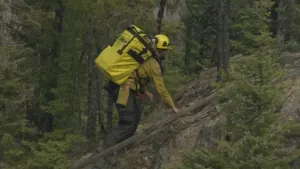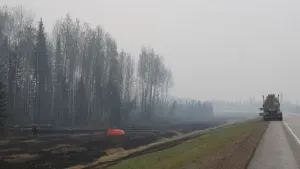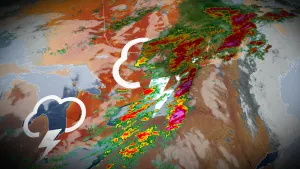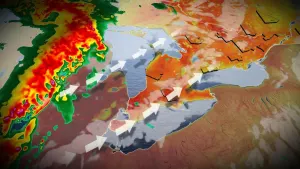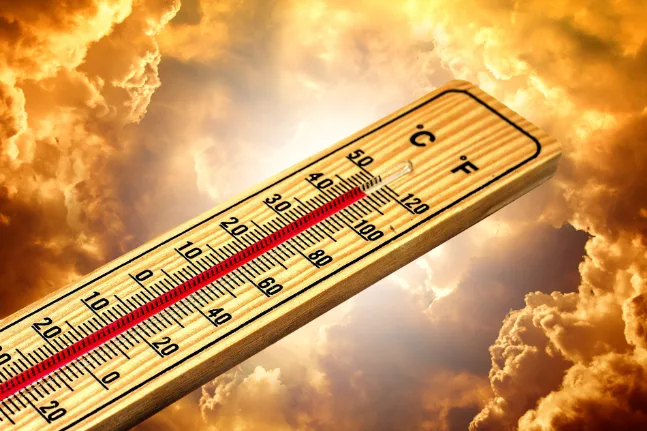
Report on B.C. heat-dome deaths urges wide support for at-risk populations
A new B.C. Coroners Service report examining last year's heat dome calls for greater support for populations at risk during extreme heat emergencies.
The report also highlighted a lag between the issuing of heat alerts by Environment Canada and the response by public agencies and the general public.
Temperatures surpassed 40 C for days during the heat dome when most of those who died included elderly and vulnerable people living in buildings without air conditioning.
RELATED: Nearly 600 lives claimed by B.C.'s historic, record-breaking heat wave
The review, entitled Extreme Heat and Human Mortality: A Review of Heat-Related Deaths in B.C. in Summer 2021, investigated the more than 800 deaths that were reported in the province from June 25 to July 1, 2021.
It found that 619 were heat-related. Coroners' service figures released in November said the deaths of 595 people between June 18 and Aug. 12 were related to the heat.
HEAT WAVE AFFECTS SOME COMMUNITIES DIFFERENTLY
Dr. Jatinder Baidwan, chief medical officer, B.C. Coroners Service, said some people face greater risk during extreme heat.
Two-thirds of those heat-related deaths were among people aged 70 and older, while more than 80 per cent of those who died were on three or more chronic disease registries, according to the report.

Fifty-six per cent of those who died lived alone, while almost every death — 98 per cent — occurred indoors.
"Most of the deceased were older adults with compromised health due to multiple chronic diseases and who lived alone," the report said.
Most who died were in homes without adequate cooling systems, such as air conditioners or fans, the report added, and "more decedents lived in socially or materially deprived neighbourhoods than the general population."
The report calls for the identification and support of vulnerable populations.
Baidwan said that could include checks on vulnerable people and providing them with cooling equipment such as fans and air conditioners. The report identified as a priority a review to be conducted by provincial officials into issuing cooling devices as medical equipment by Dec. 1.
Baidwan noted that if it's not possible to get equipment to people's homes during a heat wave, it may be best to move people into cooling centres.
Baidwan said the public and public agencies may have been slow to grasp the gravity of the situation.
"Essentially, people didn't take it as seriously as we perhaps now think we should have taken it," he said. "We're all guilty of that."
He said the report was "specifically vague" about public agencies because "we're talking about all agencies."
The report said the number of calls to 911 doubled at the heat dome's peak. It said 54 per cent of heat-dome cases were attended by paramedics with a median response time of 10 minutes and 25 seconds.
In 50 cases, paramedics took 30 minutes or longer from the time of the call until arrival. Callers to 911 were placed on hold for an extended period 17 times. Six callers were told that there was no ambulance available at the time of their call.
ALERT SYSTEM NEEDED
Badiwan said better public messaging and an alert system could help the public better understand the risks associated with extreme heat.
The report identified the need for a co-ordinated heat alert response system like the one announced by the province on Monday.
The planned B.C. Heat Alert and Response System will include two categories: heat warnings and extreme heat emergency alerts, Public Safety Minister Mike Farnworth said Monday.

The government is prepared to broadcast extreme heat emergency alerts to mobile devices through the national Alert Ready system, which is already used to issue Amber Alerts and tsunami, wildfire and flood warnings, Public Safety Minister Mike Farnworth said.
"There will be much more notification, much more in the media and much more communication with local governments," Farnworth said Monday.
Baidwan said safety warnings are required for all British Columbians, but some members of the population will require additional interventions. Broader public awareness and training on how to recognize heat concerns are needed, he said, as are wellness checks.
"How many of us....actually took the time to go knock on someone's door and ask them if they were OK?" Baidwan said. "How many of us actually realized that there was an actual significant heat event actually going on?"
LONGER-TERM PLANNING
The plan also called for longer-term planning to build homes and communities equipped to deal with warmer weather. Building codes in B.C. are primarily focused on dealing with cold weather. That needs to change, Baidwan said, and codes should reflect the need to address the heat by encouraging passive and active cooling in new and existing homes.
Communities at large should be looking at increasing green space and shaded areas, Baidwan said.
BRITISH COLUMBIA'S 2022 SUMMER FORECAST: WILL WE SEE A REPEAT HEAT DOME THIS YEAR?
The story was originally published for CBC News. It contains files from The Canadian Press.






